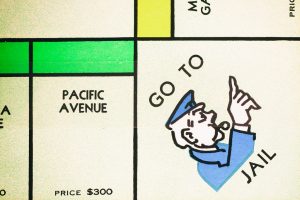
Author: Molly Donovan
Yesterday the DOJ’s Antitrust Division announced updates to its Leniency Policy and issued nearly 50 new FAQs, and related responses, regarding its leniency practices. One welcome development is that the new FAQs clarify some the DOJ’s positions concerning ACPERA—the statute designed to limit an amnesty company’s potential exposure in civil lawsuits. Previously, guidance on ACPERA was almost non-existent, yet seriously needed to curb the unreasonable demands that plaintiffs were placing on amnesty companies relative to their co-defendants, making ACPERA not particularly incentivizing, at least at times. Even worse, plaintiffs could continually threaten expensive litigation over the satisfaction of ACPERA, undermining its incentive powers even more. Now, the FAQs make the DOJ’s view clear that an applicant who chooses to pursue ACPERA benefits need not be at a plaintiff’s beck and call regardless of plaintiff’s reasonableness, or lack thereof.
While the changes on this front are helpful to potential applicants, the Division could have gone further and some uncertainties for companies contemplating a self-report to the DOJ will remain.
Here are some of the critical bullet points.
Prompt Self-Reporting. To qualify for leniency, a company is required to “promptly” self-report once the relevant conduct is discovered. While there’s no bright-line rule, “promptly” does not appear to mean that an inkling of wrongdoing must be followed immediately by a call to DOJ, as some may have previously thought. Rather, with the new FAQ guidance, the condition of “promptly” appears to be aimed at disqualifying companies whose lawyers or compliance officers investigate and confirm anticompetitive activity, yet purposefully choose not to self-report in hopes that the conduct remains otherwise unearthed.
On the other hand, the DOJ seems to recognize the fact that internal investigations conducted by counsel are typically a necessary step between some indication of wrongdoing and the seeking of a marker, and that cartel investigations in particular often span jurisdictions, and are otherwise complex and take time. This mindset and approach appear to be appropriate to the DOJ in terms of timing.
Relatedly, the FAQs say that an internal failure to appreciate that the activities at issue are illegal (or illegal in the United States) is not a defense to a failure to promptly self-report. Companies (and particularly non-U.S. companies) that are unsure how problematic a particular activity is are wise to seek U.S. counsel as early as practicable.
In any event, the DOJ’s FAQs say that if an organization is too late to obtain leniency, but nevertheless chooses to self-report and cooperate, it may earn credit applicable at sentencing.
Remediation and Compliance. To qualify for leniency, the corporate applicant must now “undertake remedial measures” and improve compliance to prevent recidivism. This requirement, as stated, is new in that “remediation” appears separate and apart from the condition that an applicant make best efforts to pay restitution. While “restitution” is focused on compensating victims, “remediation” appears to be focused mostly on internal efforts to “address the root causes” of the conduct by, for example, recognizing its seriousness, accepting responsibility, implementing measures to prevent similar conduct from reoccurring, and disciplining or firing “culpable, non-cooperating personnel.” What constitutes sufficient remediation will depend on the circumstances, according to the FAQs, but detailed guidance as to compliance can be found in the Evaluation of Corporate Compliance Programs in Criminal Antitrust Investigations Guidance (the DOJ’s guidelines regarding effective compliance programs).
What is unclear is what “recognizing seriousness” and “accepting responsibility” mean in this context. For leniency applicants who can admit to a criminal U.S. antitrust violation, but must litigate certain nuances elsewhere in the world, or in civil lawsuits in the U.S., as to the extent of harm, for example, there is a potential tension.
Restitution. The program has long required an applicant to make best efforts to pay restitution to victims where possible. Previously, “where possible” was unclear, and it’s now been clarified to mean that actual payments of restitution will be excused only in relatively narrow circumstances, e.g., “the applicant is in bankruptcy and prohibited by court order from making payments; where such payments would likely cause the applicant to cease operations or declare bankruptcy; or if the sole victim is defunct.”
Absent such circumstances, to receive a final leniency letter, “applicants must actually pay restitution.” This obviously sounds like a higher burden than merely “making efforts” to pay restitution, and the questions remain who is a “victim,” how that will be decided, and whether 100% of all victims must be compensated before final leniency can be achieved. Assuming a final letter is desired for some practical reason, the situation could be a tough one for applicants who disagree that a particular claimant is an actual victim, or that a particular claimant is owed the full amounts it says it is. In such cases, litigation over these questions could take years, making the quest for a final leniency letter a very long and uncertain one.
The same goes for another new requirement that, to get even a conditional letter, an applicant must “present concrete, reasonably achievable plans about how they will make restitution.” It’s questionable how this would work in practice. At the outset of a cartel investigation, it’s unclear how many claimants will come forward, when they’ll come forward and how much they will claim they are owed. A generic “plan” may be one thing—a prediction about who the bona fide victims are and whether they will claim compensation and how and when they will be paid is another.
As with remediation, there is also tension here for an amnesty applicant that admits to conspiratorial agreements, but will litigate the nuances involved in the complex determination of whether an agreement had full or only partial success. Given all the economic facts, there may be nothing inconsistent with an admission of criminal guilt, on the one hand, and the position that a particular claimant did not suffer. But determining who is a victim and who is not can be an intensive undertaking. If the Division is going to require actual competition to all victims, it’s an inquiry they should be willing to look at closely for fairness, particularly where the civil plaintiffs are alleging a conspiracy much bigger in size and scope (and therefore, in damages) than the conspiracy admitted to for purposes of criminal guilt.
Continue reading →

 The Antitrust Attorney Blog
The Antitrust Attorney Blog











